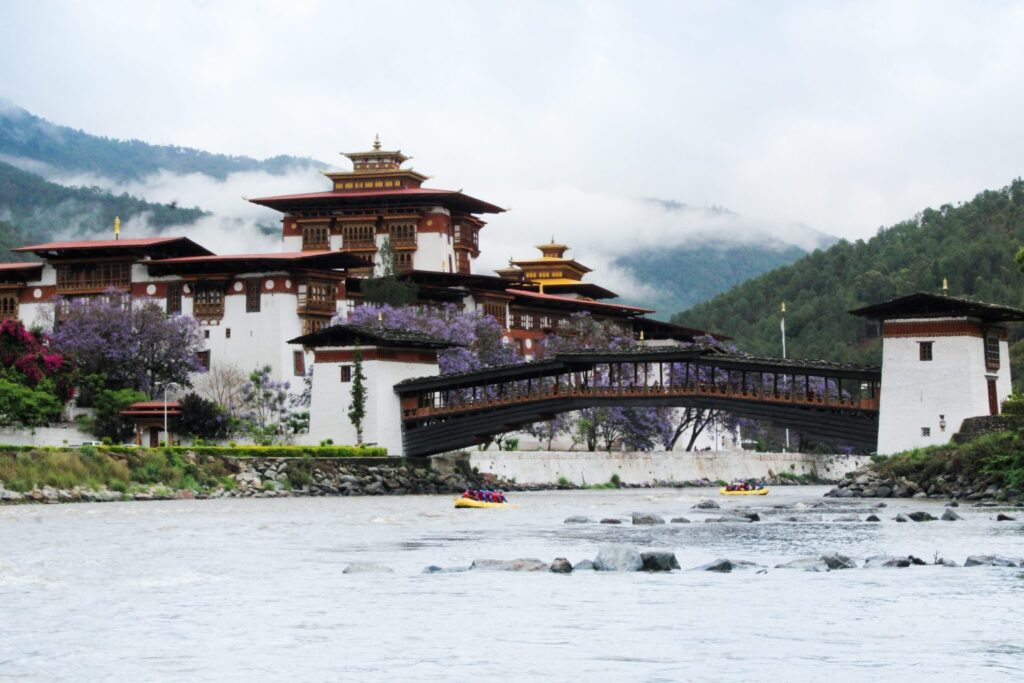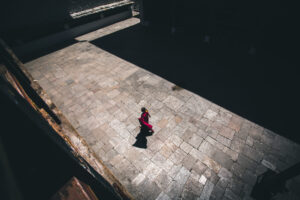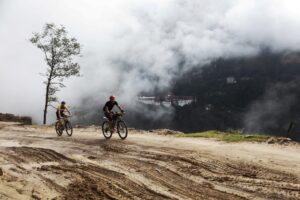
Tiger‘s Nest:
Tiger’s nest also known as Taktsang Monastery is one of the most famous holy sites in Bhutan and in the Himalayan region. It is located 10 kilometres to the north of Paro and cling to a cliff more than 3000 metres above sea level and 900 metres above The Paro valley floor, on the right side of the Paro Chhu. The legend says that Guru Padmasambhava (also known as Guru Rinpoche), a Buddhist master from India arrived here on the back of a tigress in the 8th century to subdue evils and promoted Buddhism in Bhutan.Then he meditated here for three months. Many Tibetan saints arrived to meditate in this sacred place, special Milarepa, Phadampa Sangye, the famous Tibetan yogin Machig Ladboenma and Thangton Gyelpo came here in the 11th century.
The first sanctuary to be built dates back to the 14th century by Sonam Gyeltshen, a lama from Tibet. The paintings which can still be dimly discerned on the rock above the principal building although there is no trace of the original one.
Taktsang remained under the authority of the Kathogpa lamas for centuries until the mid – 17th century. In 1645 it was offered to Zhabdrung Ngawang Namgyel when he visited this area. He aimed to build a new building here but he died in 1651 so he couldn’t effect his wish. In 1692 Tenzin Rabgye, the Fouth Desi arranged to build it.
In April, 1998 the main building of the monastery complex was burnt down and some of the statues and paintings were lost. Then it was rebuilt and finished in 2005. All Bhutanese people are expected to complete the pilgrimage at least once in their lifetime.
PunakhaDzong
Punakha Dzong was built in 1637 by Zhabdrung Ngawang Namgyel at the confluence of two rivers, the Pho Chhu and Mo Chhu. It is called Palace of Great Happiness and an imposing structure. The dzong served as the capital and seat of government until the early 1950s.Before it was the winter residence of the Zhabdrung and the state clergy and is still the winter residence of the state clergy now. Zhabdrung Ngawang Namgyel died in 1651 while he was in meditation at Punakha Dzong and his body is preserved in one of the dzong’s temple. The First King of Bhutan, His Majesty Ugyen Wangchuck was crowned on December 17, 1907.
TashichhoDzong
Tashichho Dzong, fortress of The Glorious Religion has been the seat of the government since 1952, after the Third King, His Majesty Jigme Dorji Wangchuck build this dzong so that it could be the symbol of the new capital of Bhutan.
The original dzong was built in 1216 by Lama Gyelwa Lhanangpa. It was named Do Ngon Dzong, meaning Fortress of the Blue Stone. The Dzong became the property of Zhabdrung Ngawang Namgyel in 1630 after he won a victory from the five groups of Lamas. It was rebuilt at the same place and finished in 1641. Zhabdrung Ngawang Namgyel named it Tashichho Dzong, meaning the fortress of the Auspicious Religion. It was the summer residence of Zhabdrung and the state clergy. It houses secretariat building, the throne room of His Majesty, the King and various government offices, also the summer residence of Chief Abbot and state clergy.



